
12 minute read
Bowland: A Destination For All Seasons
by Hetty Byrne
A sometimes unpredictable upland climate still shapes the march of the seasons in Bowland, where traditional land management practices remain in tune with the more fluid rhythms of nature.
Bowland sometimes feels like a place where time has stood still for a couple of centuries and nature’s calendar still dictates the progression through the seasons. The onset of each new season heralds stark changes within the landscape and on the cusp of each season, dramatic transitions unfold almost overnight.
Advertisement
© Graham Cooper
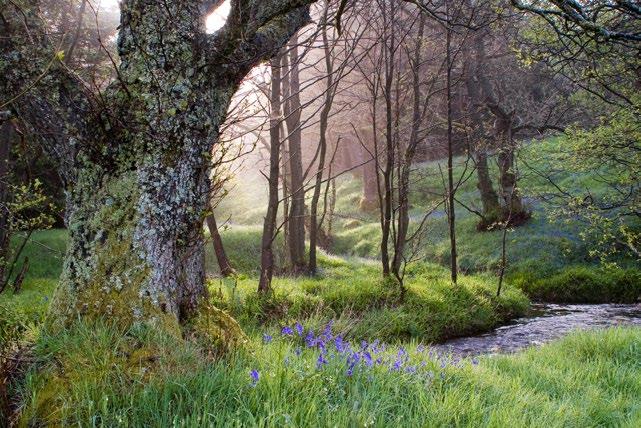
Consequently, the overwhelmingly rural landscapes of Bowland are in an almost permanent state of flux: no two days are quite the same – which is one of the Forest’s biggest attractions. Whichever time of year you choose to visit Bowland, it’s unlikely to look, sound or even smell the same way it did the last time you were here.
Spring
After the long winter months of almost suspended animation, spring is quite possibly the busiest of all the seasons in Bowland.
Hints and harbingers can arrive surprisingly early, but speak to the locals, and as far as they are concerned, winter isn’t officially over until the middle of May. Spring’s tender shoots spread slowly over Bowland, beginning in the valleys and slowly spreading up onto the plateau as the buds begin to burst forth in the more sheltered cloughs. On the farms, lambing starts early – although the first ewes to lambs are usually brought down from the higher pastures to give birth in the traditional stone outbarns or lambing sheds which are such a recognisable feature of the Bowland landscape. For an insight into the rigours of lambing time and the chance to cuddle a newborn lamb, Cobble Hey Farm on the western flank of the Forest above Garstang welcomes guests to help feed the lambs each spring from February onwards. Check the website (www. cobblehey.com) for times. Before the lambs are let loose to gambol among the fresh new grass in the pastures, the hares briefly have the fields to themselves and in March, these charismatic creatures can be seen chasing
each other around the meadows, often culminating in a bout of boxing as the feisty females rebuff the advances of overly amorous males. In the skies above, the skylarks are active from February onwards and by the end of the shortest month, the bubbling ululation of curlews returning from the coast will echo across the valley floors. Oystercatchers and lapwings arrive back from the coast around the same time, filling the fields with a chorus of cascading calls that testify to the imminent arrival of spring. By mid-March, the leafless blackthorn hedges burst into bloom almost overnight, gilding the field boundaries with a frothy milk-white blossom suffusing the warming spring air with a musky fragrance. In the sandy banks of the Hodder and the Ribble, the first sand martins return from Africa to re-colonise the burrows where they nested the previous summer. Swallows and swifts won’t be far behind and each spring, a handful of lucky birders savour a close encounter with a squadron of dotterel during their brief overnight rest stop on Pendle. This pretty little wader seems to use Pendle as a key waypoint en route for
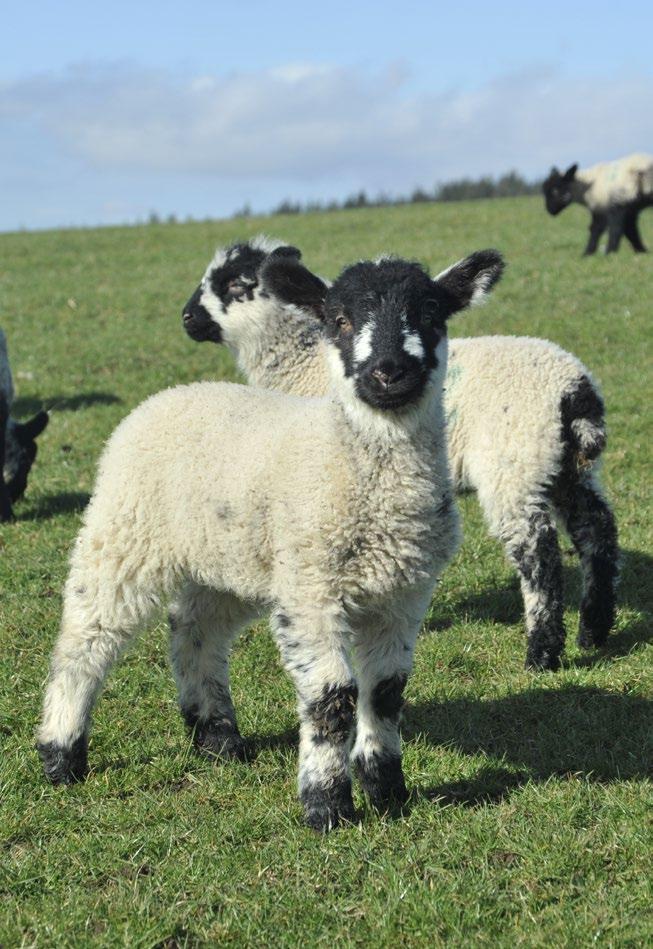
their summer breading grounds up on Scotland’s Cairngorm plateau and their confiding nature allows observers to get up close and personal and take some stunning photos. Now the stage is set for two of Bowland’s most iconic species to take a bow. In the more remote valleys, ring ouzels can be heard calling among the fresh leaf-growth as they prepare to nest and raise a couple of broods prior to returning to Northern Africa to overwinter. These scarce migrants are in decline in Britain owing to loss of habitat and Bowland is one of the best places to spot them outside their summer stronghold of the Cairngorms. The Forest of Bowland is the English stronghold of an even scarcer migrant whose numbers have recently plunged to critical levels: the hen harrier. This iconic raptor is the symbol of the Forest of Bowland, but three years ago, it was in danger of extinction in the region. After a couple of years when Bowland harriers failed to raise a single chick, nesting success is on the increase again, but this beautiful bird remains on the endangered list. As spring reaches its peak, in the woodlands, after the mauve drifts of bluebells have died back, the warm, acrid aroma of wild garlic rises from the forest floor, heralding the transition to full summer.
Where to Watch Wildlife:
l See boxing hares in the large meadows around Waddow Hall between Clitheroe and Waddington
l Spot ring ouzels in the wooded lower reaches of the Langden Valley near Dunsop Bridge
l Find bluebells in the beautiful woodlands at Calder Vale and Oakenclough in the upper Wyre Valley
l Listen out for cuckoos in the more remote Bowland valleys or the plantations on Grindleton Fell and snipe ‘drumming’ in the fields on top of Hall Hill above Whitewell
Don’t Miss: In late April and early May, look out for males and female hen harriers ‘sky dancing’ – elaborate aerial courtship display’s prior to mating.
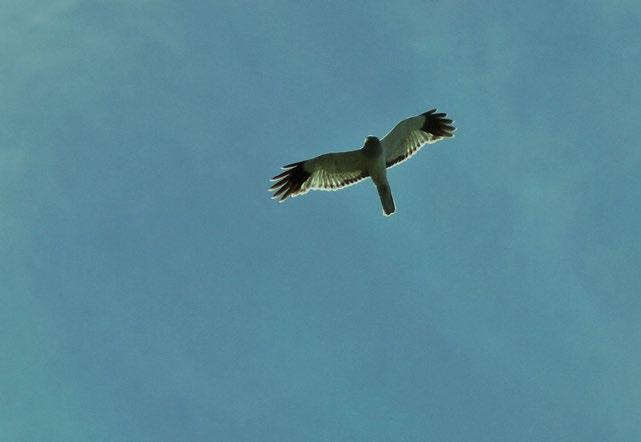
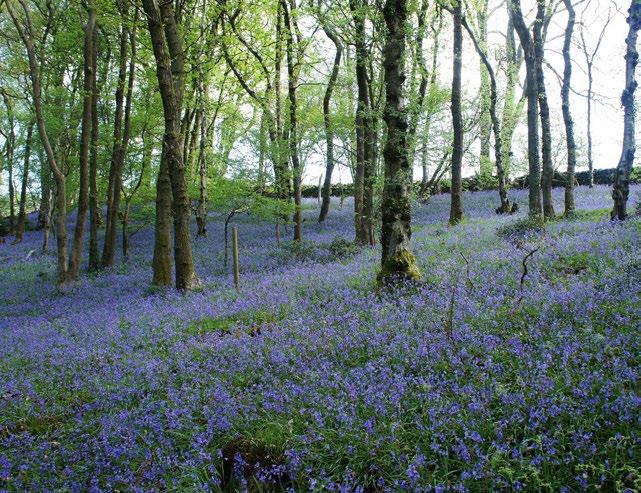
Summer arrives slowly in the uplands, where frosts can persist until the end of May, making the flora wary of revealing its full summer finery until the middle of June.
But it’s well worth the wait, as Bowland retains the fresh first flush and vivid colours of early summer much longer than the lowlands. The relatively low intensity agriculture, dominated by dairy and sheep farms, preserve the biodiversity of the uplands and the complex food chains remain intact. Insects and pollinators continue to thrive thanks to the survival of traditional hay meadows where wild flowers are allowed to flourish before mowing takes place much later in the summer than in more intensive systems, where meadows may be cropped three times a year. This practice benefits the farmland birds – especially ground-nesting waders like the curlew and lapwing – which rely on healthy invertebrate populations to feed their chicks. It also ensures healthy populations of summer visitors like swifts and ensure the rivers Hodder and Ribble maintain a good head of fish for the increasing number of otters found across the catchment. Insects are also the staple food of the local bat population, .three species of which are commonly active across the AONB from May to September. Head for footpaths beside rivers or the edge of woodlands to see bats. You don’t have to stay up too late. First bats – usually noctules – are out and about 20 minutes before sun down. As summer unfolds, the hillsides are cloaked in a glorious late summer mantle of mauve and green as the heather blooms and dense swards of emerald bracken burst forth across the fells. This is when the whinberry or bilberry – our native blueberry – can be picked at many locations around the Forest of Bowland. The season is short and it’s hard work, but this tart little berry has a uniquely subtle flavour when sweetened and cooked in crumbles or shortcrust pastry pies. The almost endless summer daylight makes this the best time of year to explore the most remote corners of the AONB, losing yourself on lonely tracks and footpaths miles away from public roads or habitation.

The northern and western fringes of the Forest offer the wildest and most challenging terrain to explore on foot. This is the ideal time of year to climb rugged hills like Parlick and Fair Snape, Tarnbrook Fell and Clougha Pike and an expedition to the Ward Stone – the highest point in the Bowland Fells – guarantees some breath-taking panoramas. The Hornby Road is a classic route which traverses the Bowland Plateau from north to south, stretching the 15 miles (24km) from Hornby to Slaidburn. Allow at least eight hours to complete the route and take plenty of water and snacks with you because there are no opportunities to refuel along the way.
Where to Watch Wildlife:
l Wander along Cross Lane, between Bashall Eaves and Waddington to see rarities like the pied flycatcher and redstart flitting between the hedgerows either side of this quiet country lane.
l Head down to the Hodder at Whitewell or the Ribble at Brungerley Park to see Daubentons or noctule bats hunting insects in the evenings.
l Look out for fox cubs frolicking under the hedgerows in the corners of hay meadows and otters fishing on the Hodder early in the morning or late in the evening.
l Pick bilberries on Birdie Brow and Longridge Fell during August.
Don’t Miss: National Meadows Day at Bell Sykes Farm, Slaidburn, 4th July – an annual celebration of wildflower meadows and the wildlife they support. Peter and Lynn Blackwell leave the mowing until much later at Bell Sykes to allow the wildflowers to come into full bloom. See for yourself the difference this low intensity approach makes to the biodiversity in the six Coronation Meadows which are open to the public. Check the Festival Bowland listings at the back of this Guide for further information.
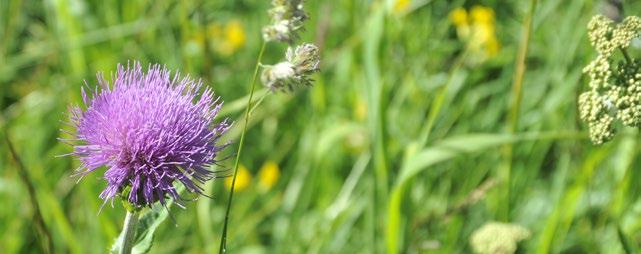
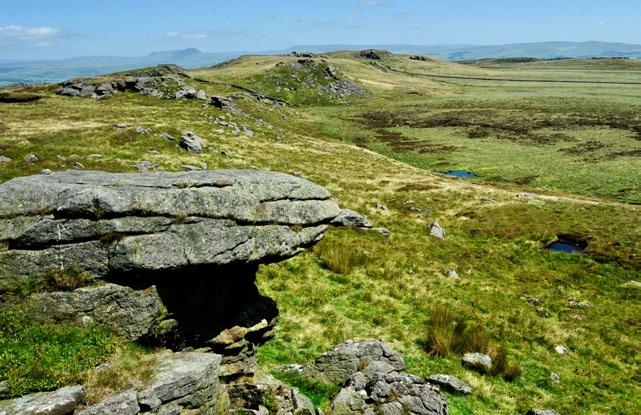

As the days shorten and the shadows lengthen, the steep-sided river valleys gild the fringes of the Bowland uplands with the auburn colours of autumn. Along the Hodder, Wyre, Roeburn and Wenning, the leaves melt into a fiery display that rivals the best of New England.
As the last of the migratory birds like the wheatear and ring ouzel return to sunnier climes, beneath the golden woodland canopy, Atlantic salmon brave the autumn spates to swim upstream to their spawning grounds in the headwaters of the Ribble and Hodder. On the forest floor, toadstools and mushrooms push up through dense drifts of fallen leaves and the resident sika deer become more visible as the rut approaches. This is a busy time for the farming communities as the harvest needs to be safely gathered in and cattle and sheep brought down from the fells and installed in their winter quarters. In between wrangling sheep and weather-proofing outbarns, farmers gather at various showgrounds across the Forest of Bowland for the traditional autumn agricultural shows – a chance to renew friendships, exchange gossip, compare notes and show off the pride of their flocks and herds. Five agricultural shows in and around the AONB are permanent fixtures on the farming calendar and offer an inspiring showcase of the best of Bowland produce and an unrivalled insight into the pride and passion our farmers invest in their stewardship of these important upland landscapes. Before the frosts of winter establish their icy grip, the dark skies of Bowland present an excellent opportunity to indulge in a spot of star gazing. Light pollution is kept to a minimum in this sparsely populated corner of Lancashire and since the AONB achieved Dark Sky Discovery Site status, the area has become popular with amateur astronomers. With no large towns or cities for over 20 miles in any direction, the skies at the heart of the forest are among the darkest in England, allowing observers to see millions more stars, constellations and galaxies than in more built-up areas.
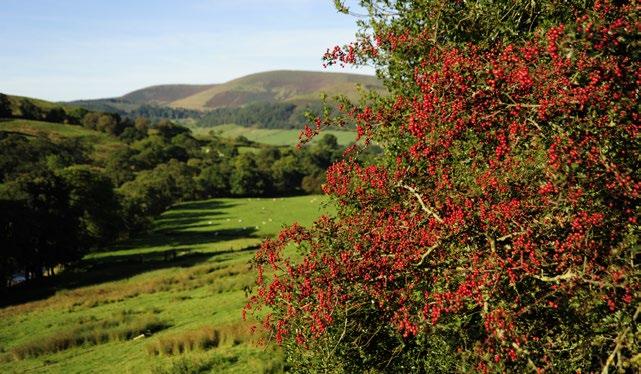
Where to Watch Wildlife:
l On the Ribble and the Hodder, look out for returning merganser and goosander – large, fisheating ducks which breed inland before the males return to sea.
l Look out for short-eared owls patrolling over the grassland above Stocks Reservoir and Gisburn Forest
l Head to Roeburndale and the Lower Hodder near Hurst Green for spectacular autumn colours.
l As dusk descends, watch huge flocks of redwing gather for a communal roost at Kemple End on Longridge Fell.
Don’t Miss: Check the Festival Bowland pages in this guide for details of organised Dark Skies sessions led by expert astronomers at Discovery sites like Gisburn Forest or Beacon Fell – but book early – these events are very popular with families and always sell out quickly.
Winters can be long and harsh in Bowland – especially for the remote hill farms where the demands of lambing time can be compounded by a big freeze which turns the exposed north-facing slopes into an extreme environment.

Nature and farming go into a state of suspended animation during January and February, with only the hardiest species venturing out to forage for meagre pickings in the icy uplands. Snowfall is pretty much guaranteed above the 500-metre contour and after an extended cold snap, when the peat and bogs freeze hard, the winter walking can be exceptional – although its crucial to have full winter walking gear in your pack before setting out. Flocks of snow bunting are often spotted near the summits of the higher hills of Bowland and when the winds turn northeasterly and cold weather descends from the arctic, waxwings occasionally appear in the most unexpected places to gorge on any remaining berries. Throughout the winter months, look out for local game on the menus of the inns and pubs of Bowland, where hearty stews and roasts of pheasant, venison, rabbit and hare are seasonal staples. By the end of the month, the earliest hints of spring are in evidence: catkins on the hazel trees, skylarks on the wing, early celandines in the woods the return of the waders to the flood meadows – and thus the cycle of life begins again.
Where to Watch Wildlife:
l Large flocks of ducks and geese gather to overwinter on Stocks Reservoir, where they can be viewed from the hides that are easily accessible from the car park on School Lane.
l Look out for snow buntings during cold snaps on the summits of Parlick Pike, Pendle or Longridge Fell
l Badgers are especially active when they emerge from hibernation in Feburary – look out for them in the woodlands at dusk when they may emerge for some ‘spring cleaning’ of the sett.
Don’t Miss: Snowdrops are a welcome precursor to the arrival of the first spring flowers and huge drifts are visible at Newton in Bowland and Hornby Castle near Wray, where the grounds are open to the public for an annual Snowdrop Weekend in mid-February.










